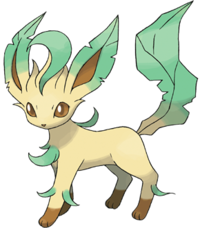As an English speaking person who recently got into learning Japanese, I was intrigued by the use of the three writing systems: Kanji, Hiragana and Katakana, however I could not truly understand why it is that way. I do know a bit about the history of these languages but that is not what I am interested in knowing; I wish to know what purpose these three separate systems serve in these current times to justify their existence of used simultaneously as compared to other languages having a singular writing system.
I tried to research a bit about this topic, but I couldn’t get a satisfactory answer. I thought Hiragana was supposed to be used for native words and Katakana for foreign words, but this assumption didn’t quite fit what I saw while reading manga or watching anime. I once saw someone say how Kanji was incredibly essential to the Japanese language, but I couldn’t grasp the reason, considering how these Kanji characters were seen with their hiragana pronunciation as a side-note, I knew it wasn’t worth just thinking about the explanations by myself, thus I thought of the idea of this post.
I wish to learn about the use of these writing systems from the perspective of a person who knows both Japanese and English well, is aware of how these systems are used in practical daily life and understands the trouble of someone brought up in an English medium, unable to grasp the significance of this system. This is my genuine curiosity and I do not mean to belittle the use of this system in any way.
As someone who reads Japanese, reading all kana can be slow because you are reading one syllable at a time. It makes going back to old video games and reading children’s media tedious.
Once you know enough kanji though, you can read incredibly fast. Depending on the material, I can speedread faster in Japanese than I can in English.
This is because kanji is meant to be recognized at a glance rather than read in your head. The kana in Japanese sentence is supposed to provide grammatical context. So instead of reading “Inu ga ie ni nemashita” in my head, I’m seeing “Dog, in house, slept” from a glance.
So the downside to this system is that you’re spending most of your education learning every character you’ll need, but the upside is it can make reading very efficient once you have got it down. I think it’s part of the reason Japan still has a pretty robust book culture.
As a fluent Japanese speaker, I’ll give you context. Nearly all of Kanji and many words in the Japanese language have Chinese roots (in fact Kanji itself means “Han Chinese letter” in a literal sense). Of course many characters are variants when compared to Traditional or Simplified Chinese, and in terms of complexity, Japanese Kanji sits between the two.
In speaking, there are two categories of reading characters onyomi and kunyomi. Kunyomi is the unique Japanese way of saying things, and onyomi is saying a word in a way derived from Chinese. Telephone is 電話denwa in Japanese vs. 电话 dianhua in Mandarin, Society is 社会 shakai in Japanese vs. 社会 shehui in Mandarin. See how they line up closely?
Now, the question is when do you use which? As a general rule of thumb, when multiple are combined together, you use the onyomi (Chinese-derived way like the above examples). When by itself (many exceptions apply) or when followed by hiragana letters (which is called okurigana) as part of the same word, then you use the kunyomi. I’m not going to complicate things further on this topic unless anyone has questions about something they wanna know more specifically.
Prepositions and connector words in English (and, is, have, to, with, not, do, will, you get the idea) use hiragana only.
Borrowed words from foreign languages use katakana almost exclusively. Bear in mind that not everything came from English, so just putting English words with a lot of extra vowels is not sufficient to make a coherent Japanese sentence. パン (pan is from the Portuguese word for bread), and ピーマン (pi- man is from piment, the French word for pepper).
Japanese people kept kanji around because the letters give a descriptive meaning when read as written and helps reduce confusion when many words can sound similar. This was also the case for Korean (kanji is known as Hanja) and in other languages if you go back further in history, but it has largely fallen out of favour in modern times for those languages.
I’m happy to answer any followup questions about this for my fellow lemmings.
PAIN
All joking aside, Katakana and Hiragana are a bit like having lower case and uppercase letters, Kanji is like having symbols for specific things, like the save icon means “Save a file”


